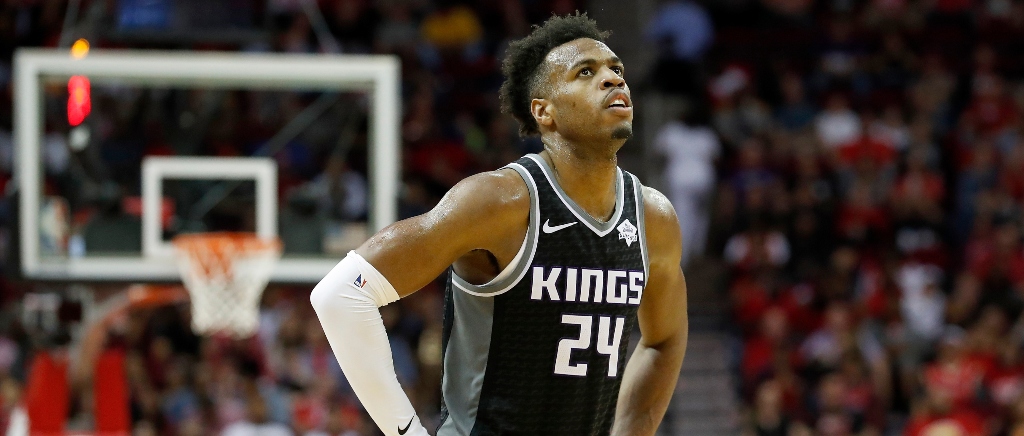For the 2016 NBA Draft class, this is a very important year. Some, like presumably Pascal Siakam, will have locked themselves into a long-term deal by the start of next week, but for many, this season will be their showcase going into restricted free agency next summer.
Restricted free agency is a difficult spot to find ones self as a young player. The first taste of free agency for former first round picks isn’t a real chance to test the open market. Instead, their team holds the right to match any offer they find. Typically the issue brought up by this is other teams feeling it’s not worth their while to make an offer sheet to a player if the expectation is that their current team is going to match anything. However, as we’re seeing play out publicly with Buddy Hield, and a bit more privately with Jaylen Brown, is the other side that is even more difficult for young players to accept and understand.
The Kings have reportedly offered a four-year, $90 million extension to Hield, who would prefer something around $110 million according to Chris Haynes of Yahoo, which is a pretty sizable gap. Brown, meanwhile, hasn’t been thrilled with the Celtics offer of four years, $80 million and plans to explore restricted free agency to see if the market can bring him more, per Haynes. As Hield noted recently, the process is a bit of a nuisance to him.
“As a player, you want to have that trust that the franchise has your back, and we’re just waiting for them to make a move and come to an agreement,” Hield said to the Sacramento Bee. “They’re talking, but nothing is moving yet. Nothing has moved. I’m ready to make things happen, man. I want to make Sacramento my home. I’m ready to get this sh*t done. I want to be here and if it doesn’t happen, then things can go the other way.”
Here is the crux of the issue of restricted free agency. For the first three years of their careers, young players — particularly those that are at that “near star” level — have been told they’re a priority by the organization and that they want them to be a key part of their future. This is, likely, the truth, but the reality is that for non-max players, once it comes time for a possible extension or when free agency opens, the current team never wants to set the market against themselves.
Six years ago, Jeff Teague was frustrated with the Atlanta Hawks after the Hawks had done little in the way of discussing a new contract with their then-RFA starting point guard. Eventually the Hawks brought Teague back after Atlanta matched the four-year, $32 million offer sheet he signed with the Bucks, but, having talked with the Hawks front office at the time, when they matched the contract, they had to bring Teague in and partly explain the process of why they waited and weren’t the ones to extend an offer.
It’s a rough introduction for many young players to the business of basketball and can indeed put a strain on that relationship with a team and front office that, oftentimes, they’ve had nothing but positive interactions with. For Hield in particular, it appears he’s showing signs of frustration.
It Be Like That Sometimes.
— Buddy Love !!!! (@buddyhield) October 16, 2019
Safe to say the dude isn’t happy pic.twitter.com/alEraQ1Q8Q
— Filip (@The_AngrySerb) October 16, 2019
Restricted free agency exists solely to benefit the teams, but it also requires a deft hand to navigate it with the inevitable frustrations from the player to manifest itself into something worse. That’s why some teams, like the Hawks did with Teague, simply won’t offer a contract and would rather match whatever comes out and have the conversation after so they don’t cause any more damage with an offer that could be seen as a low-ball offer from the team. In situations like the ones involving Hield and Brown, the team feels obligated to make an offer, but is trying to thread the needle between avoiding an overpay and coming in so low that the player is offended.
The Celtics seem unlikely to bridge that gap by next week, and while the $20 million gap between Hield and the Kings is an awfully big one. The issue is that communication in these situations can help, but it’s hard to explain why your valuation of the player might not be as high as the player believes it is. We often hear about the “business of basketball,” but there’s no situation where it’s more evident and more damaging to the player-organization relationship than in the year leading to a player’s restricted free agency.







